Tag: primary sources
Trial: African American Newspapers, Series 2

Until March 15, the Library has trial access to Readex’s African American Newspapers, Series 2, which includes 75 newly available newspapers and complements Series 1, which the Library acquired last year.
“While African American Newspapers, Series 1, was created from the extensive newspaper archives of the Wisconsin Historical Society, Kansas State Historical Society, and the Library of Congress, Series 2 was created from the remarkable holdings of the American Antiquarian Society, Center for Research Libraries, the Library of Congress, and New York Public Library. Selections were guided by James Danky, editor of the monumental African-American Newspapers and Periodicals: A National Bibliography.”
Trial: UK Press Online
 Through the end of February, the Library has trial access to UKPress Online, a collection of historic and current newspapers. The following information was provided by the vendor.
Through the end of February, the Library has trial access to UKPress Online, a collection of historic and current newspapers. The following information was provided by the vendor.
The Daily Express (Updated daily) was launched in 1900 by Arthur Pearson as a mid-market broadsheet. The ha’penny Express was the first to devote its front page to news (rather than advertisements): “This paper is produced with the intention of supplying its readers with news. That is the excuse for its existence.” Advance orders for Issue One were a million and a half copies– “absolute impossibility to supply… we are doing our best.”
The first issue was over-subscribed. That edition began a series of articles from an Expressman in “Hayti”; another was despatched to Patagonia to search for a “giant ground sloth” – in vain, although his articles gripped readers for weeks. This policy of having “our man on the spot” became a hallmark of the Express.
When Pearson went blind, during the Great War, he sold the Express to Conservative MP Max Aitken, soon to be Lord Beaverbrook, the first “Fleet Street baron” and an evangelist of the free press – “a flaming sword which will cut through any political armour”; the paper’s symbol became The Crusader. Beaverbrook crusaded, both politically and editorially: despite personal advice to Edward VIII to give up Wallis Simpson, the Express notably chronicled every detail of their affair. And not always successfully: the Express’s vehemence against Attlee was credited with losing the 1945 election for Churchill!
By 1936, the Express had the world’s largest circulation of more than two million, rising to four million in the 1940s, under the seminal editorship of Arthur Christansen. It was one of the first newspapers to carry gossip, sport and women’s articles; it was the first to carry a crossword. With its commercial success and vast editorial staff around the world, the Express dominated Fleet Street; as a bemused Royal wrote, “I was met by a gaggle of reporters from the Daily Express and a gentleman from the Glasgow Herald”.
Express contributors run from the exiled Leon Trotsky to Evelyn Waugh (who lampooned Beaverbrook as Lord Copper – “up to a point”), William Hickey (Tom Driberg) and the cartoonist Giles.
The Express became a (black-top) tabloid in 1978. The Daily Star was a late-comer, as was the Star on Sunday, occupying the red-top tabloid slot in competition to the Sun and Mirror.
The Daily Star (Updated daily) was launched in 1978 (and is available from 2000) by Express Newspapers as a tabloid for the north of England, competing against The Sun’s Page 3 girls with its own topless Star Birds. In 1987, it lost a £500,000 libel action after accusing Tory deputy chairman Jeffrey Archer of paying hush money to a prostitute – a political scandal in those pre-Trump days…. Twelve years later, the now-Lord Archer admitted he had lied and, in 2002, he had to repay the cash with costs and interest – £1.5million. The same year, the Star launched a Sunday sister (all available – updated weekly).
Church Times (updated weekly): The World’s leading Anglican newspaper. The first 26 years, from the paper’s very first issue in 1863 to 1889, saw fierce ‘battles’ over Ritualism: one of the reasons why the Church Times was established was to defend the High Church against “Broad and Low Bigots”. The paper also warned against the digging of a Channel Tunnel, criticised President Lincoln for going to the theatre (where he was assassinated), and had a stern word for one of its advertisers: “It would be curious to learn how such a cad came to be a priest.” All of the archive is now available: cataloguing almost every page from 1863 to the present.
Daily Worker & Morning Star (updated daily): The Communist & Socialist Press providing a different angle on news – through WW2 and the new millennium.
Action, Fascist Week and Blackshirt the Fascist titles published by Oswald Mosley before and during WW2 (until banned by Churchill’s government). A view from the far Right as the World prepared for war.
The Watchman (1835-1884): primarily a Wesleyan, (and the first) Methodist newspaper, The Watchman has an impressive breadth and depth of reporting of matters of import in 19th Century Great Britain and abroad. Details of movements of clergy are useful for those trying to track their family history; parliamentary election results are published in detail; discussions of the Second Anglo-Afghan war (1878-80) may give some perspective to modern campaigns.
World War One & World War Two A key package of newspaper titles giving a broad political and geographical range of views from national and regional publishers’ newspapers: Includes the issues of all of the above titles between 1914-1918 and 1933-1945. Providing the view from ‘the North’ the WW2 editions of the Yorkshire Post cover from January 1933 to April 1946.
The South Eastern Gazette (1852-1912), formerly the Maidstone Gazette, was a major regional title for the south-east of England. Available free in the UK thanks to the ‘Your Heritage Lottery Fund’ and the Kent Messenger, the title covers Kent and much of the South-East of England from East Hampshire through Surrey and Sussex to South Essex and parts of London.”
530K Primary Resources Now Available Online through The Japanese American Evacuation and Resettlement: A Digital Archive
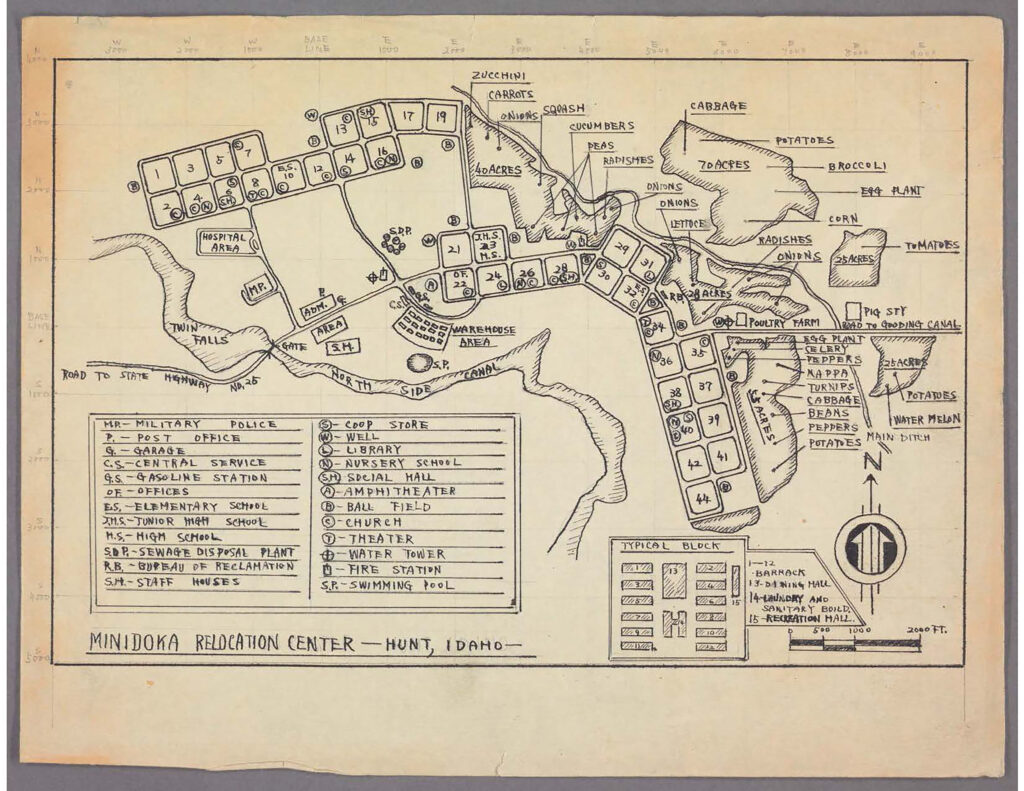
The Bancroft Library has recently completed the digitization of nearly 150,000 items related to the confinement of Japanese Americans during World War II as part of a two-year effort to select, prepare, and digitize these primary source records as part of a grant supported by the National Park Service’s Japanese American Confinement Sites Grant Program. This program helps to support the preservation and interpretation of U.S. confinement sites where Japanese Americans were detained during World War II. This recent project, The Japanese American Internment Sites: A Digital Archive, represents our fourth grant from this program, which together have culminated in over 530,000 primary resource materials being made available online.
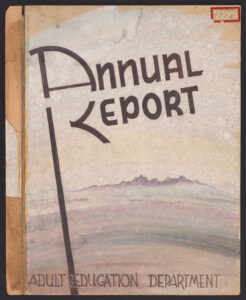
The project focused on the U.S. War Relocation Authority (WRA) files from the Japanese American Evacuation and Resettlement Records (BANC MSS 67/14 c). The WRA was created in 1942 to assume jurisdiction over the incarceration of Japanese Americans during the war. Between 1942-1946, the agency managed the relocation centers, administered an extensive resettlement program, and oversaw the details of the registration and segregation programs. These newly digitized records from the Washington Office headquarters and the district, field, and regional offices, formally document WRA management of internment of Japanese Americans in “relocation” centers and resettlement of approved individuals under supervision in the eastern states. Digitized materials document the registration of individuals; disturbances such as strikes; policies and attitudes; daily life in the camps including educational and employment programs; correspondences and other writings by evacuees; Japanese American service in the armed forces; and public opinion.
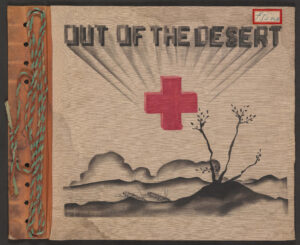
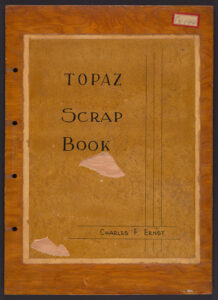
Since 2011, the Bancroft has been awarded four grants from the National Park Service’s Japanese American Confinement Sites Grant Program. The previous grants have digitized records from the Japanese American Evacuation and Resettlement Study and archival collections selected from individual internee’s personal papers, photographs, maps, artworks, and audiovisual materials. The Bancroft’s Japanese American Evacuation and Resettlement: A Digital Archive website (http://bancroft.berkeley.edu/collections/jacs) brings together all the digitized content and the recently published LibGuide (https://guides.lible.berkeley.edu/internment) that explains how to use and access these collection resources.
As we now embark on our recently awarded fifth grant from this program, we look forward to bringing even more collections online to support researcher access. We are honored and grateful to be able to make these important resources available to help interpret this period in American history and to preserve them for future generations.
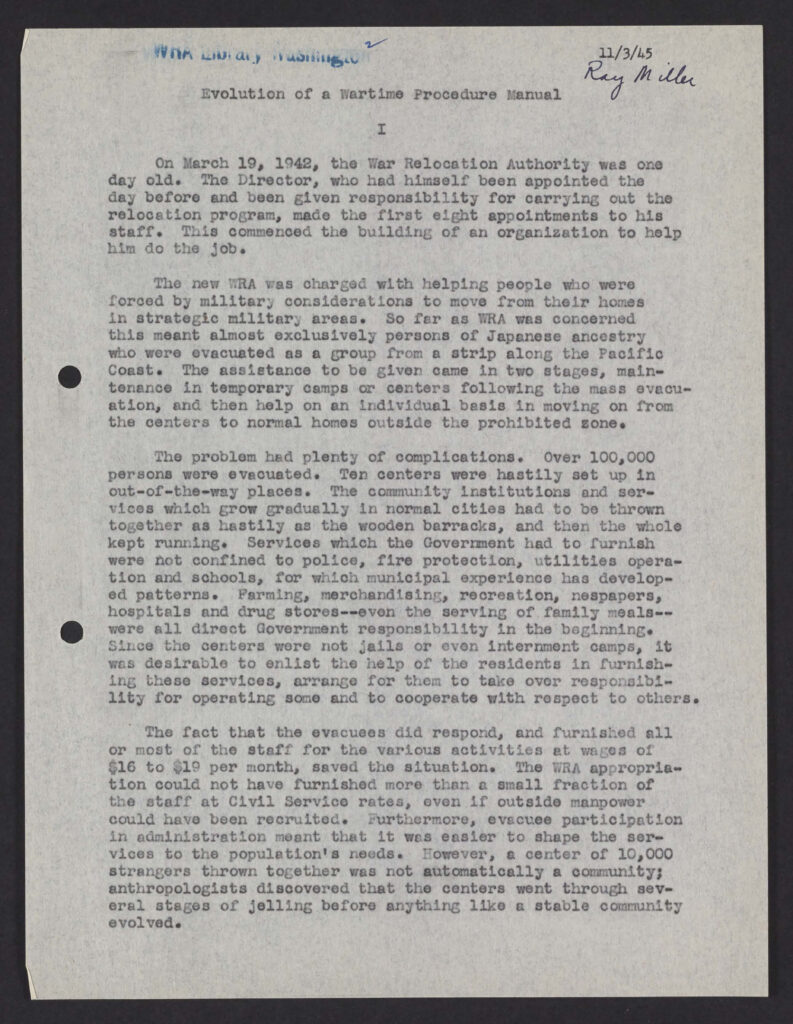
The project was led by digital project archivist Lucy Hernandez and principal investigator Mary Elings, Assistant Director of Bancroft and Head of Technical Services. Special thanks to Julie Musson, digital collections archivist at Bancroft and Jennafer Prongos, BackStage Library Works technician for their work on this project, as well as support from Theresa Salazar, Bancroft curator of Western Americana. Many thanks to the Library Information Technology group at the University Library for their work in managing the files, maintaining the information systems used in the project, and ensuring the publication and long term preservation of the digitized collections through our partnership with the California Digital Library.
————
This project was funded, in part, by a grant from the U.S. Department of the Interior, National Park Service, Japanese American Confinement Sites Grant Program. Any opinions, findings, and conclusions or recommendations expressed in this material are those of the author(s) and do not necessarily reflect the views of the U.S. Department of the Interior.
Scenic Views, Civic Pride, and Silly Gags: Edward H. Mitchell Postcards at The Bancroft Library
We all feel our wings are clipped this holiday season, but you can enjoy a tour around turn-of-the-century California, journey up the Pacific Coast, around the American West, or even visit Hawaii and the Philippines, thanks to newly published content on the Berkeley Library’s Digital Collections site.
Over 10,000 postcards issued by San Francisco publisher Edward H. Mitchell, circa 1898-1920, are now online. This nearly-comprehensive collection was compiled over many decades by Walt Kransky, who generously donated it to The Bancroft Library. Walt’s website has been the go-to site for collectors interested in Mitchell cards; there he compiled a checklist of all known Mitchell postcards, whether he owned examples or not. And he did own the vast majority!
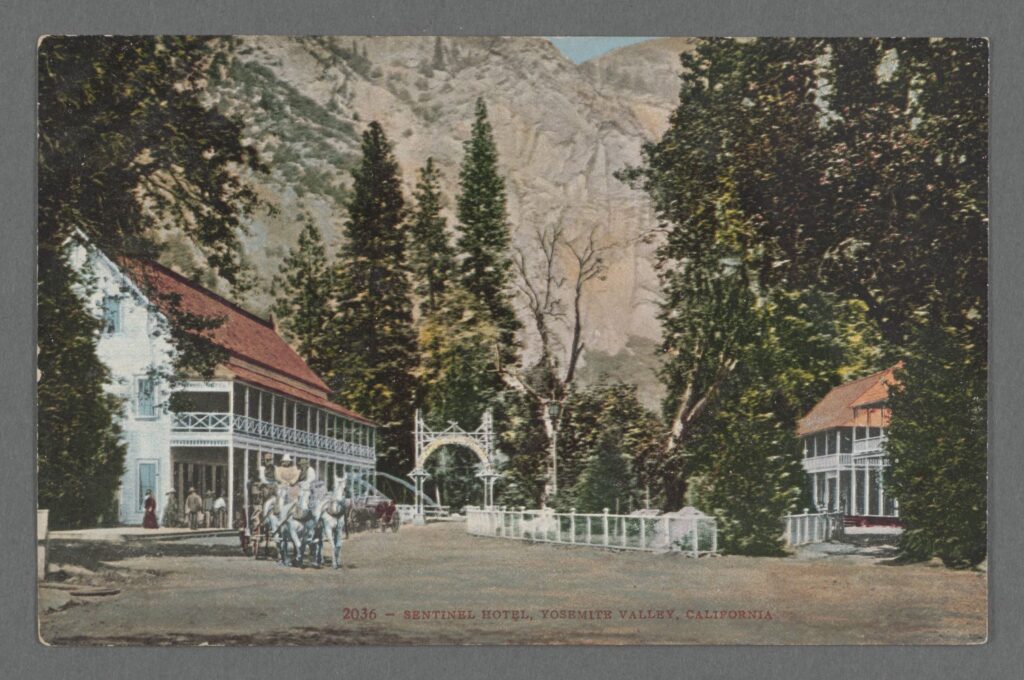

Must-see tourist sites from Yosemite to Southern California beaches and the mountains and forests of the Northwest are in abundance, but so are local industries, agriculture, and countless examples of small town pride.
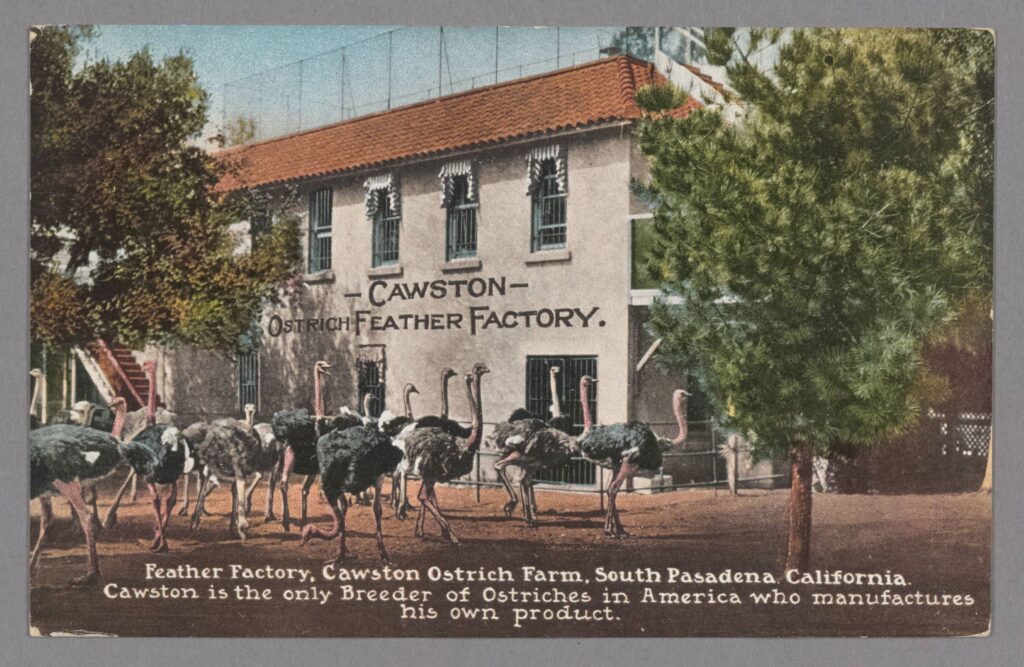
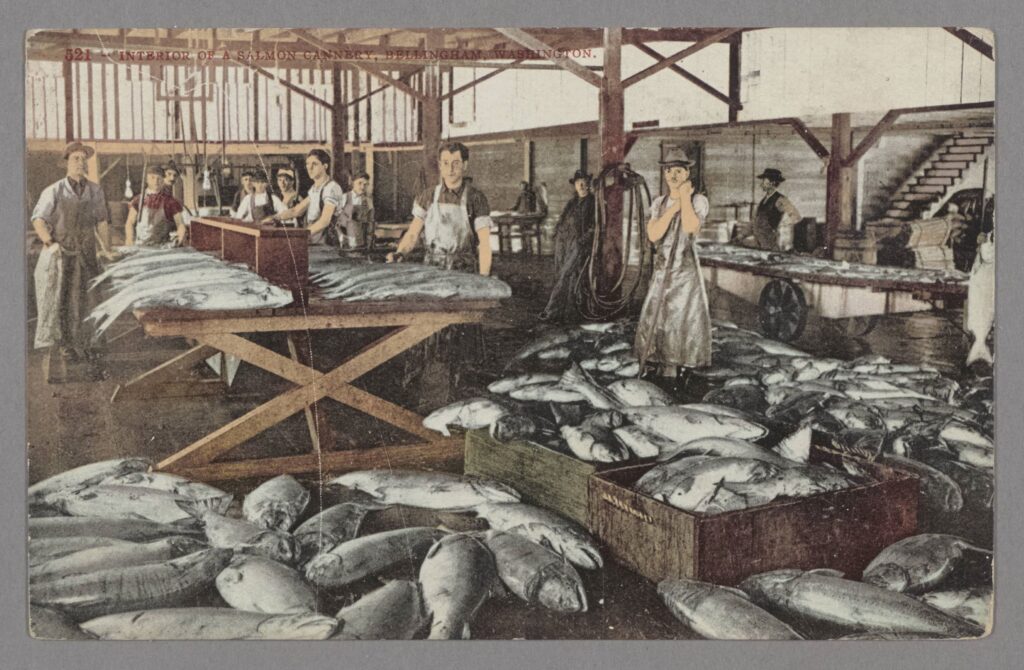
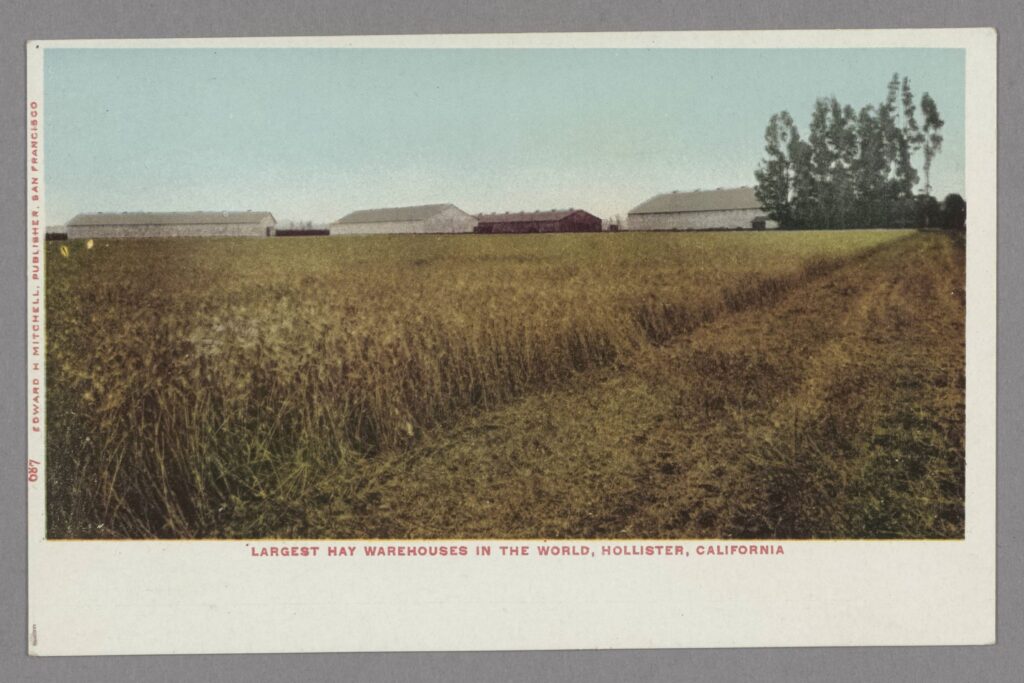
There is quite a range of court houses, schools, asylums, and even irrigation works on view.
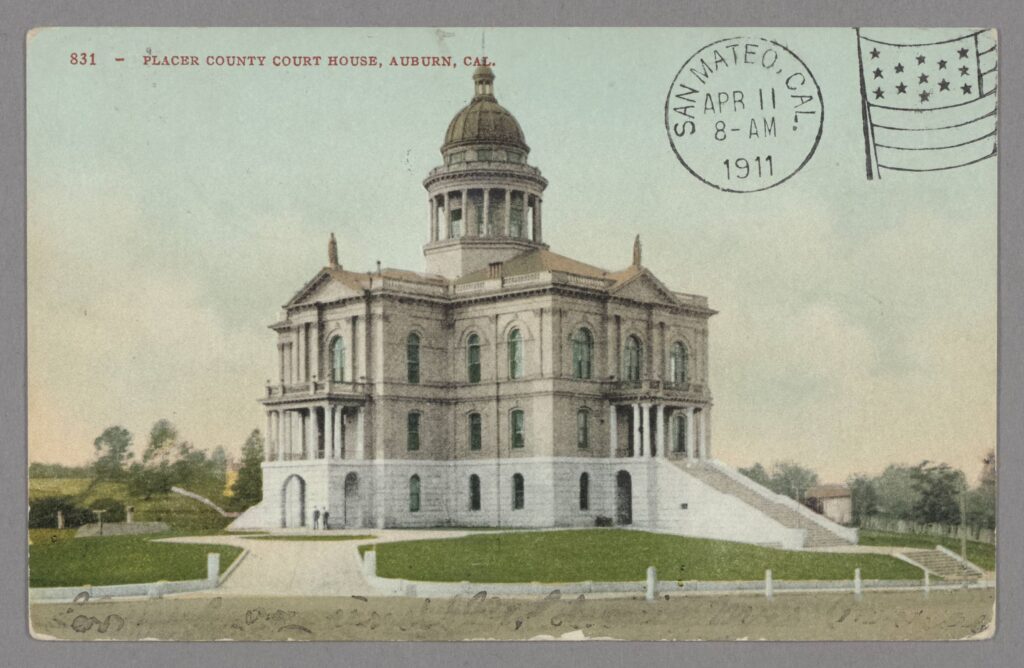
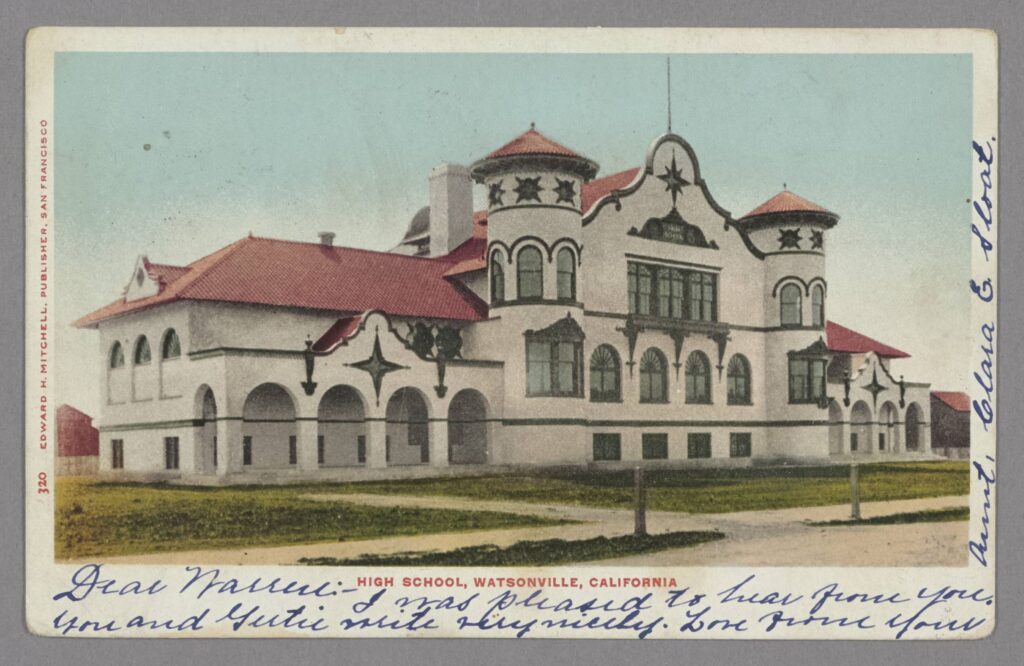
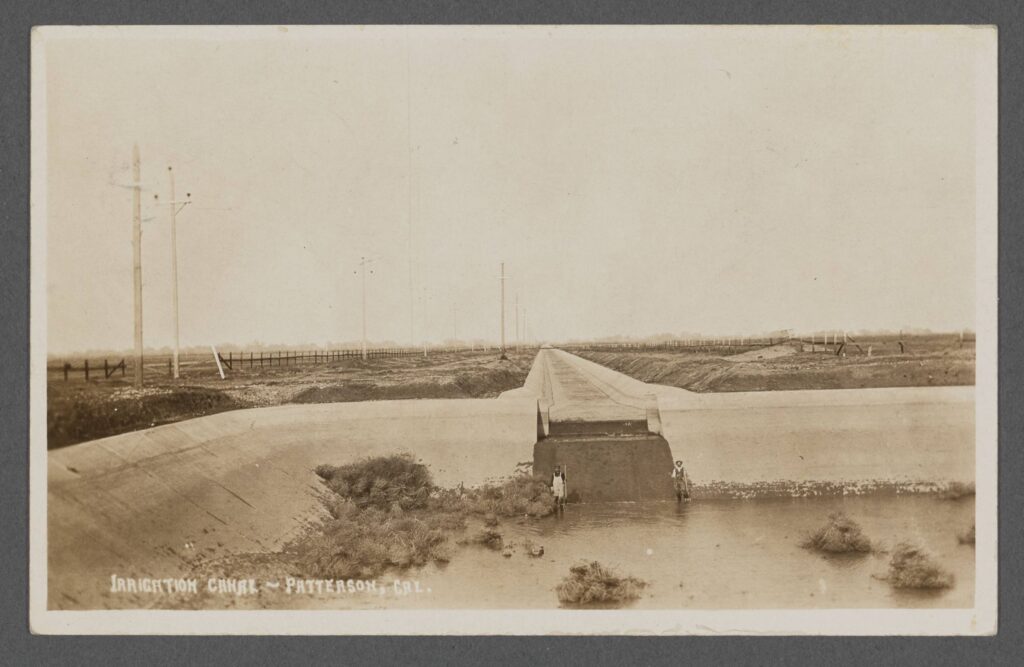
Period humor, for better or worse, is a recurring feature.
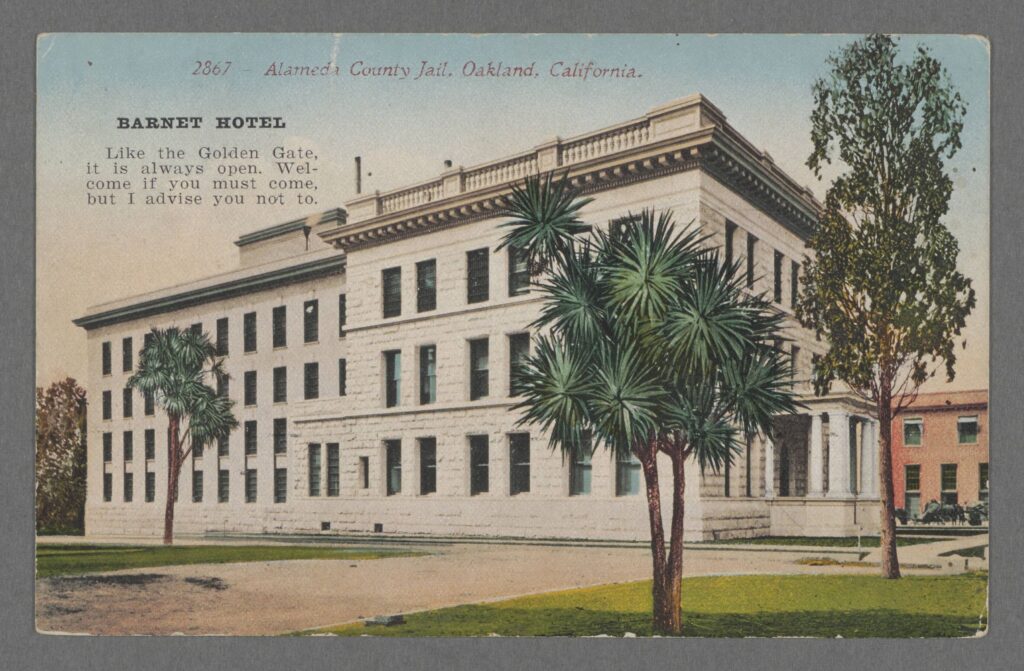
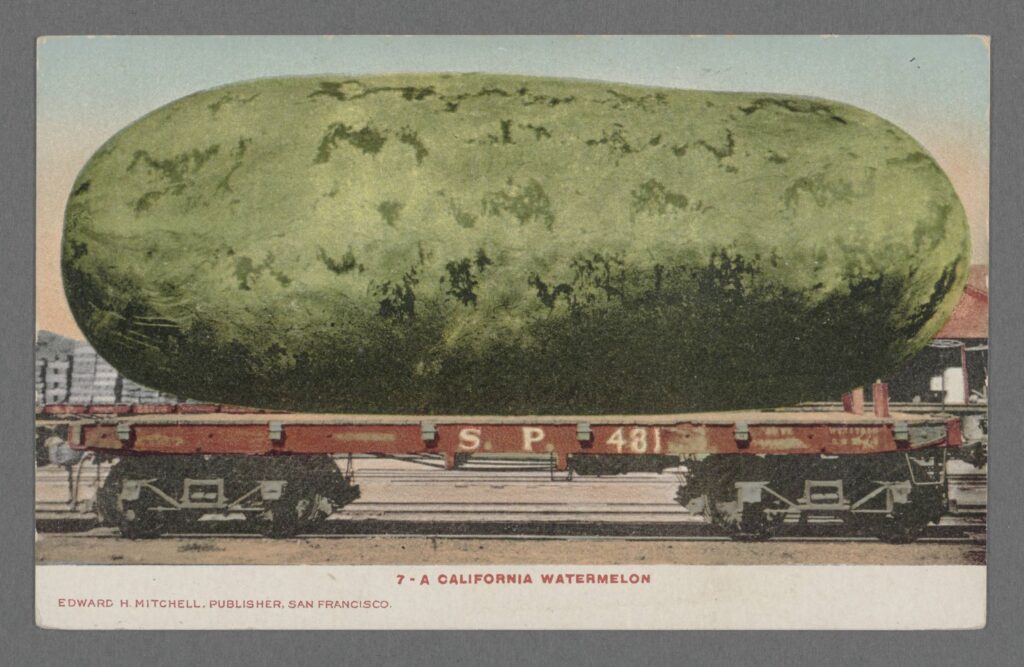
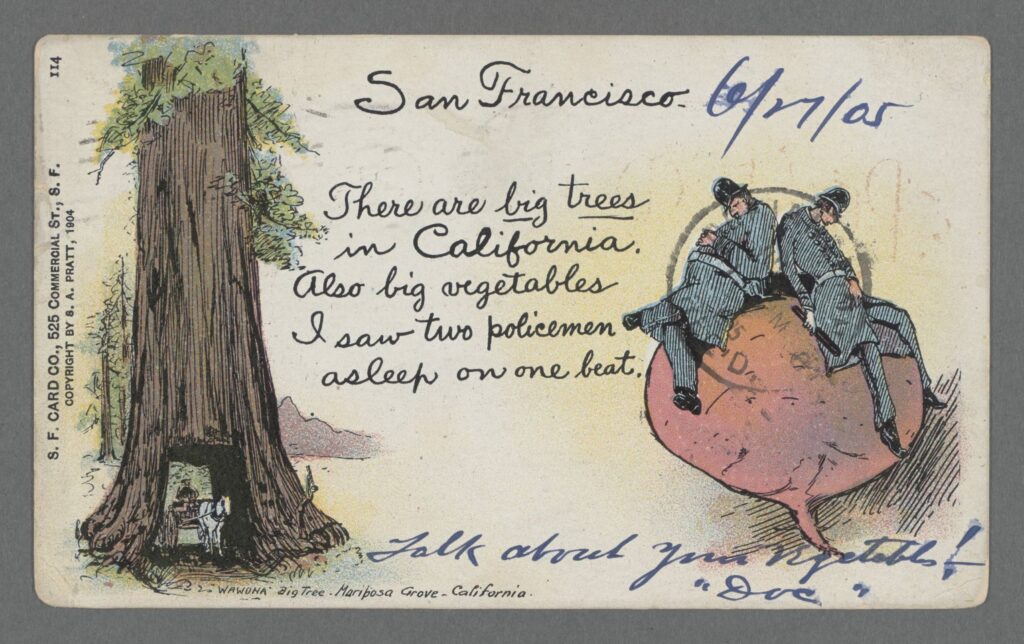
In addition to great images, Kransky’s Mitchell collection provides insight into the business of early postcard production. This was a new form when 1898 “Private Mailing Cards” were first issued as “authorized by act of Congress.”
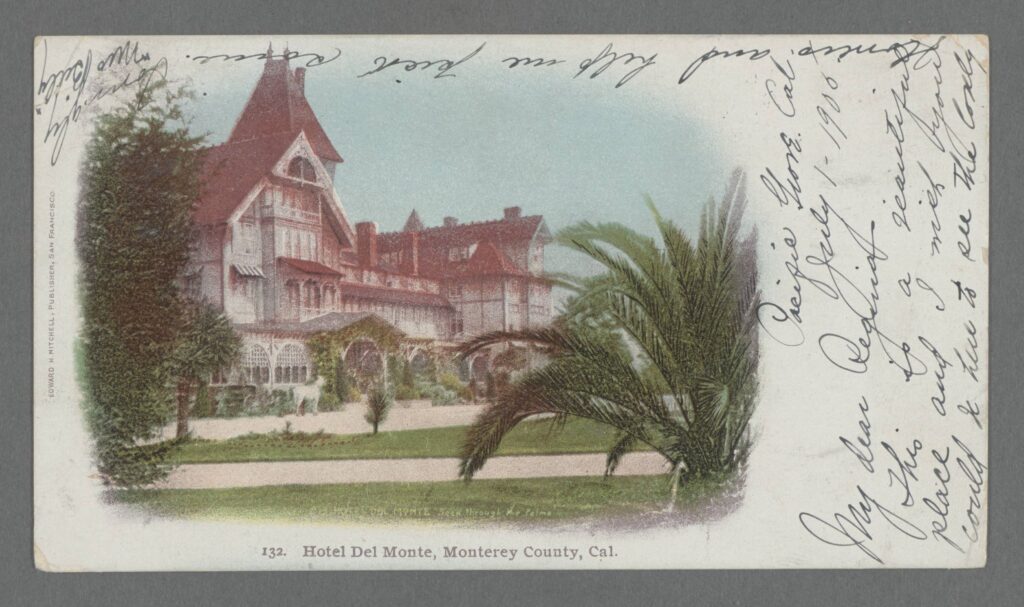
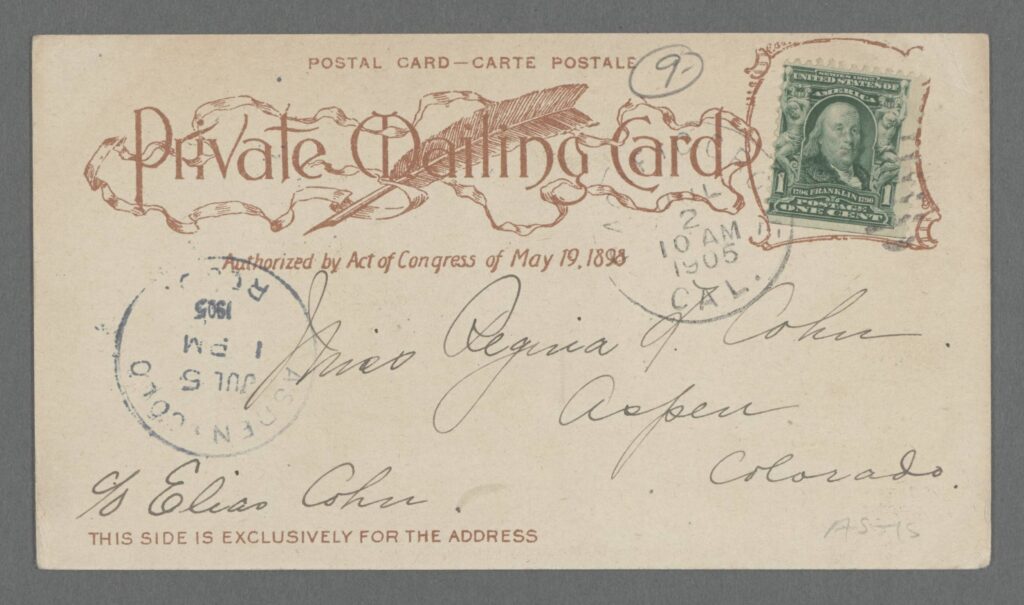
Walt Kransky arranged his collection by back type and imprint style and he collected duplicates of given images in all their various styles of presentation. This variety, all from a single publisher, offers great opportunity for scholarship and close studies of visual culture early in the 20th century.
So, whatever your interest, make a cup of cocoa and enjoy an armchair tour, courtesy the Walter Robert and Gail Lynn Kransky collection of Edward H. Mitchell postcards at The Bancroft Library!
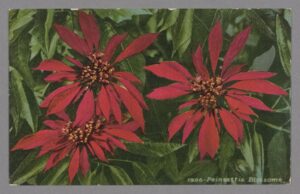
Many Library staff collaborated to bring this collection online. Bancroft curatorial and acquisitions staff worked with the donor to preserve this collection at Berkeley, and hundreds of hours of work on descriptive data and inventory alignment were carried out in Bancroft Technical Services’ Pictorial Unit. Library Imaging Services created the thousands of high resolution scans, and the descriptions and images were linked together and brought online through the efforts of Library IT. Most importantly, thanks are due to Walt and Gail Kransky for their generosity, his decades of collecting, and the years of expertise he committed to documenting his collection.
Trial: Frontier Life: Borderlands, Settlement & Colonial Encounters
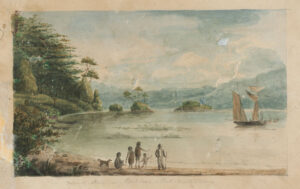 Through November 30th, the Library has a trial for the digital resource Frontier Life: Borderlands, Settlement & Colonial Encounters. The scope of the resource, as described on the site:
Through November 30th, the Library has a trial for the digital resource Frontier Life: Borderlands, Settlement & Colonial Encounters. The scope of the resource, as described on the site:
“The earliest documents in this collection are from the seventeenth century but the majority of the material originates from the eighteenth and nineteenth centuries. The material covering North America covers the varied frontier regions from fur trappers in Canada to cowboys in Texas and government in Baja California. It is divided into the frontier regions of the American East, the American Midwest, the American Southwest, California & Mexico and Canada. It covers the exploration of these regions followed by trade with native peoples, colonial rivalries, expansion of government and new nations and the final settlement and ‘closing’ of the frontier.
Africa is mainly represented by its frontiers of the south with the British colonial expansion into modern day South Africa. There are also excellent clusters of material relating to the exploration of West Africa and the colonial administration of Lagos.
The beginnings of European Australia and New Zealand are covered by British government documents, starting with Arthur Phillip and the penal colony at Sydney. The frontiers of other parts of Australia are also covered by documents from the UK National Archives and some material from Australian archives.
Finally, there is some material relating to Central America, specifically British Honduras (Belize), in the form of the George Arthur Papers. George Arthur’s career here relates to the other regions featured here as he spent time on the Canadian and Australian frontiers.”
Primary Sources: Resources on film
Through the Library, you have access to these fairly recently acquired resources:
Independent World Cinema: Classic and Contemporary Film – Includes over 400 documentary and feature films from select American distributors of independent and international film, including Milestone Films, Zeitgeist Films, Pragda, and Oscilloscope.
Docuseek2 – Docuseek2 is a streaming video service featuring social issue and documentary films from independent distributors, including Bullfrog Films, Icarus Films, National Film Board of Canada, and Fanlight. Note: When browsing the platform, you will see film icons next to each title. Grayed out icons indicate Berkeley does not have access to these titles. To view a list limited to titles owned by Berkeley, click the “My Movies” link at the top of the page.
Socialism on Film – This collection of films reveals war, history, current affairs, culture, and society, as seen through the socialist lens. It covers countries such as the USSR, Vietnam, China, Korea, much of Eastern Europe, the GDR, and Cuba.
Primary Sources: Resources on the Middle East
Over the past year the library has acquired new resources on the Middle East and North Africa, which include:
Minorities in the Middle East: Christian minorities, 1838-1967 – A digitized version of 10 volume collection primary source material. It includes original political despatches, correspondence and reports covering: Christian communities in the Levant 1838 to 1955 in overview, and the affairs of the Assyrian communities 1880 to 1951, the Greek Orthodox, Roman Catholic, Jacobite, Chaldean and Syrian Catholic communities, and Protestant communities in the Levant and Iraq, in particular, with further detail about the Maronite communities in the Levant 1841 to 1958, and Coptic Christian communities in the Levant and Egypt 1917 to 1967. These volumes also cover the Jeddah murders of 1858 and 1895, and the treatment of Armenians in Turkey and the Levant, including the Armenian massacres during the First World War.
Minorities in the Middle East : Jewish communities in Arab countries, 1841-1974 – A digitized version of a 6 volume collection, which covers the arrangements and conditions for Jewish communities living under Islam, throughout the Arab world, from 1840 to 1974.
Middle Eastern and north African Newspapers – A digital archive of prominent newspapers from the the Middle East and North Africa.
Noor Digital Library – a collection of thousands of full text Persian ebooks in humanities and religious studies. This include history, literature, language, Islam, and philosophy.
NoorMags – One of the largest specialized databases in Islamic Studies and Humanities. It provides full text access to more than 1300 magazines for over a million articles in mainly Persian, with some Arabic and English languages.
Primary Sources: Supreme Court Insight
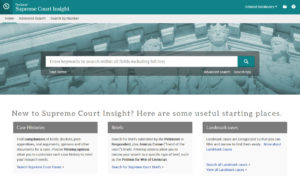 ProQuest Supreme Court Insight includes full opinions from U.S. Supreme Court argued cases, including decisions, dockets, oral arguments, joint appendices, and amicus briefs from 1975-2017. (The database is still being built, so all dates are not yet covered.)
ProQuest Supreme Court Insight includes full opinions from U.S. Supreme Court argued cases, including decisions, dockets, oral arguments, joint appendices, and amicus briefs from 1975-2017. (The database is still being built, so all dates are not yet covered.)
The search interface provides quick access to case histories, briefs, and landmark cases. An advanced search option provides many more options, allowing you to limit to content types, date ranges or court terms, court of origin, Justice/Opinion type, and Amicus Curiae Briefs. You can search within the documents for names and organizations, attorney names, Justice names, petitioner names, respondent names, subject, and Supreme Court Case name. A detailed guide provides searching advice.
Primary Sources: Women and Transnational Networks
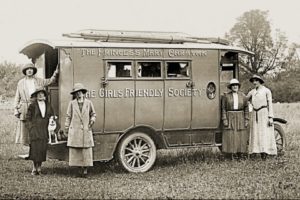
Issues of gender and class ignited nineteenth-century debate in the context of suffrage movements, culture, immigration, health and many other concerns. Using a wide array of primary source documents—serials, books, manuscripts, diaries, reports, and visuals—Women and Transnational Networks focuses on issues at the intersection of gender and class from the late-eighteenth century to the era of suffrage in the early-twentieth century, all through a transnational perspective. The collection contains deep information on European and North American movements, but also expands its scope to include collections from other regions.
Researchers and scholars will find rare content related to:
- Social reform movements and groups
- High and popular culture
- Literature and the arts
- Immigration
- Daily life
- Religion
Primary Sources: BAMPFA TVTV digitization project
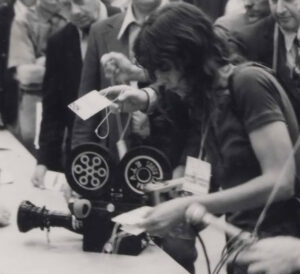 For the last few years, the UC Berkeley Art Museum & Pacific Film Archive has been digitizing paper records and almost 450 camera-original open-reel videotapes from Top Value Television (TVTV), a 1970s “guerrilla video” collective based in the Bay Area and later Los Angeles. Highlights from the papers and all the raw footage that was digitized is now available on an interpretive website for the project.
For the last few years, the UC Berkeley Art Museum & Pacific Film Archive has been digitizing paper records and almost 450 camera-original open-reel videotapes from Top Value Television (TVTV), a 1970s “guerrilla video” collective based in the Bay Area and later Los Angeles. Highlights from the papers and all the raw footage that was digitized is now available on an interpretive website for the project.